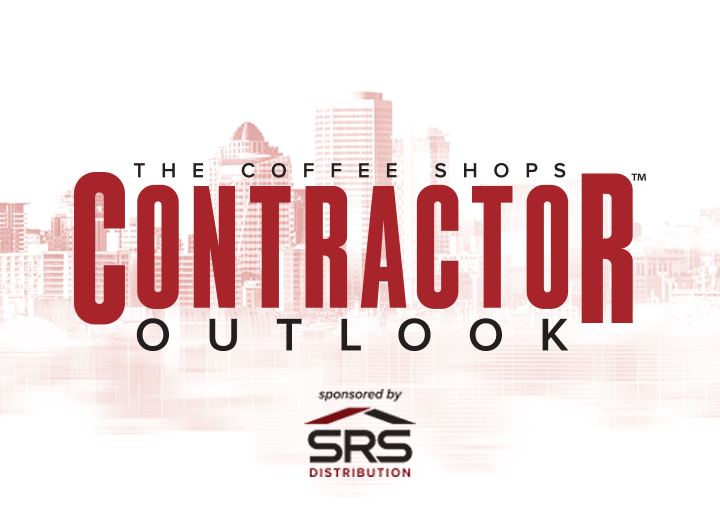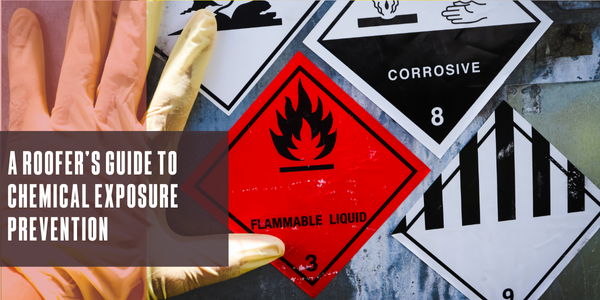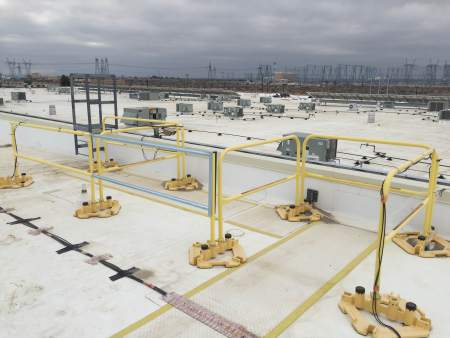A roofer's guide to chemical exposure prevention
July 14, 2025 at 12:00 p.m.By Cotney Consulting Group.
Don't overlook this invisible — and potentially deadly — threat.
When most people think of roofing hazards, they picture high ladders, steep slopes and fall protection systems. However, chemical exposure is one of the more invisible — and often overlooked — threats to a roofing job site. From adhesives and sealants to coatings and cleaning agents, roofing professionals are regularly in contact with potentially hazardous substances that can affect their health and safety if not handled correctly.
Whether you're working on a residential reroof or a large commercial build, chemical safety is critical. Our team at Cotney Consulting Group created this guide to break down what roofing contractors and crews need to know to protect themselves and their teams from exposure on the job.
Where chemicals show up in roofing
Roofers come into contact with chemicals more often than many realize. Common substances on job sites include:
- Adhesives and primers used for membrane roofing
- Solvents and cleaners for prep and cleanup
- Sealants and coatings that release volatile organic compounds (VOCs)
- Asphalt fumes from hot mop applications
- Spray foam insulation chemicals
- Paints, lubricants and fuels
Some of these products emit vapors that can be inhaled, while others can cause harm through skin contact or accidental ingestion. Short-term exposure without proper safety measures can lead to irritation, dizziness, burns or respiratory issues. Long-term exposure can result in chronic conditions or serious illness.
Understanding the risks
Chemical exposure can impact roofers in several ways:
- Inhalation of vapors or dusts: Especially in enclosed or poorly ventilated areas, like crawl spaces or attics.
- Skin contact: Certain chemicals cause burns, rashes or absorption into the bloodstream.
- Eye contact: Splashes or airborne particles can cause irritation or damage.
- Accidental ingestion: Typically a result of contaminated hands or clothing.
The danger is not always immediate. Many chemicals do their damage over time, silently building up harm to the lungs, skin or internal organs.
Read the labels. Know the sheets.
Before using any chemical, every crew member should understand what they're working with. That starts with reading the label and referring to the Safety Data Sheet (SDS).
An SDS provides critical information about:
- The chemical's hazards
- Protective equipment needed
- First aid instructions
- Safe handling and storage
- Emergency spill or leak procedures
Employers must ensure SDSs are readily available on every job site and that workers know how to interpret them. A quick review can prevent a long-term injury.
PPE: Your first line of defense
Personal protective equipment (PPE) is essential when handling chemicals. Depending on the product, this may include:
- Gloves: Chemical-resistant gloves (not cloth or leather) should be worn when handling adhesives, solvents or anything corrosive.
- Eye protection: Safety glasses or goggles shield against splashes and airborne particles.
- Respirators: A respirator approved for chemical vapors is a must when working with strong fumes or sprays, especially in enclosed spaces.
- Coveralls or long sleeves: To minimize skin exposure and reduce the chance of burns or irritation.
Ensure PPE is in good condition, fits properly and is specific to the chemical hazard.
Ventilation: Don't let fumes build up
Many roofing products release fumes that can be dangerous when inhaled — especially when working in confined areas like crawlspaces, attics or mechanical rooms. Always ventilate the area as much as possible using fans or natural airflow.
Avoid spraying or applying chemicals when wind or weather conditions might direct vapors toward occupied buildings, air intakes or fellow workers.
Storage and spill control
Chemical safety doesn't end with application — it includes how products are stored and what happens in an emergency.
- Storage: Keep containers tightly closed when not in use. Store flammable chemicals in a designated, ventilated and labeled area. Never store incompatible substances together.
- Spills: Every job site should have a spill kit with absorbent materials, gloves and disposal bags. Spills must be cleaned up immediately according to the SDS instructions.
Train your crew on responding to a chemical spill — panic or incorrect handling can make a bad situation worse.
Hygiene and housekeeping
Even small things can make a big difference in exposure prevention:
- Wash hands thoroughly before eating, drinking or smoking.
- Do not store food or drinks near chemicals.
- Avoid wiping hands on clothing that may be contaminated.
- Clean tools and surfaces regularly to prevent the buildup of residues.
- Dispose of rags and waste properly, especially those soaked with flammable liquids.
Training is critical
One of the best defenses against chemical injuries is education. All roofing personnel should be trained on the following:
- Recognizing chemical hazards
- How to read labels and SDSs
- Using and maintaining PPE
- First aid procedures for exposure
- Spill response and emergency action plans
Reinforce this training during toolbox talks and safety meetings. Safety is not a one-and-done effort — it must be ongoing.
Final thoughts
Roofers work in challenging, unpredictable environments. With so many moving parts on a job site, it's easy to overlook the invisible threats — especially those in a can, tube or drum. But chemical hazards are real and potentially deadly.
By understanding the products you work with, using the proper protective equipment and practicing good habits, you can dramatically reduce your risk of exposure. Roofing contractors who take chemical safety seriously protect more than just their crews — they protect their business, reputation and future.
So next time you pop open that bucket of adhesive or prep your tools with cleaner, ask yourself: Am I working safely or fast?
Learn more about Cotney Consulting Group in their Coffee Shop Directory or visit www.cotneyconsulting.com.























Comments
Leave a Reply
Have an account? Login to leave a comment!
Sign In